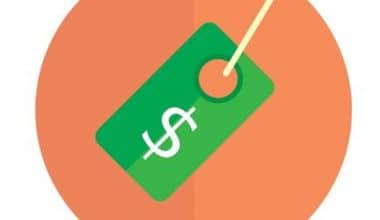Business introduction emails are an effective way to initiate conversations with prospective leads, referral partners, and customers. They provide a reliable channel for developing business relationships and creating sales pipeline opportunities. When reaching out to a contact, use a proven introduction email sample that captures their attention and maximizes engagement. To quickly and easily target prospects, we’ve created a self-introduction email sample for real estate, new employees, and business owners.
Business Introduction Email Sample
A business introduction email is a cold email. It is the first email you send to a potential client to sell your product or service. The main goal of a business introduction email is to build trust and goodwill between you and your lead to start a mutually beneficial, long-term business relationship.
What Does a Business Introduction Email Sample Look Like?
Although each business introduction email you send will be unique, they should all follow the same format.
#1. The subject line
The most important part of your introductory email, your cold email subject lines, is what your leads see first. These factors influence whether they open your message or discard it.
Personalization of your email should begin here. You need to appeal to your lead and address their pain point, while also encouraging them to open the email to find out more. Even using your lead’s name in the subject line increases open rates by 26%.
#2. The opening line
The introduction follows, which, like the subject line, should be brief and to the point.
You must be aware of the formality of your greeting. In a more modern style of business, “Dear Mr/Ms. X,” which is appropriate for more traditional industries such as universities, banking, government, and financial institutions, may sound strange.
When introducing yourself, consider what your prospect needs to know about you. The goal isn’t to sell you; it’s to sell your solution, so a simple explanation of your name, position, company, and solution will suffice for the time being. Once your lead has responded, you can properly introduce yourself.
#3. The primary value proposition
The proposition is the most important part of the body of your email.
First and foremost, you should start with a compliment or express your interest in what your lead does. This demonstrates that you have done your homework and taken the time to learn about their industry.
The next part of your pitch is your core value proposition. This is another opportunity to demonstrate your research to prospective clients by illustrating your knowledge of how their business operates, as well as to prove your expertise by identifying what could be done better.
#4. Adding a little extra
This isn’t a required step, but if you can add value to your lead without costing them anything, this is a great place to do so.
#5. A call to action
Finish your introductory email with a small call to action before signing off and providing your contact information to ensure your lead responds. Let them know you’re ready to talk to them and encourage them to contact you via your preferred channel if they want to learn more.
Business Introduction Email Sample Examples
Following up with a potential center of influence or service partner you met at a business event.
This template can be used to send a follow-up to a potential business partner, much like sending a sales email to a prospect after an event. Nothing will be finalized solely via email, similar to a lengthy sales process. To start the conversation and schedule a meeting, you can use this sample in conjunction with the business email introduction example.
Subject Line: It was a pleasure to meet you at [event name].
Hello [first name of potential partner],
It was a pleasure meeting you at the [event name] [time increment that has passed, for example, “last week.”]. I especially liked the [something you liked about the event, for example, “speaker who discussed the tax bracket changes”/”networking aspect of the event.”]
I wanted to talk to you about potential collaboration opportunities. [Explain why a partnership would be beneficial. For example, “Because you are in the SEO business and I am in the content writing business, we could be solid referral sources to help our clients boost their content marketing campaigns.” /”My managed-service provider (MSP) has been looking to add a supplemental system automation service to the services we offer our customers, but we’d need to subcontract it out to a specialist like yourself.”].
I’d love to speak with you about this further. Please let me know when you are available in the coming days or use the Schedule Appointment button in my signature to find a time that works for you.
Thank you,
[Your name], [title]
[Company]
[Email address]
[Phone number]
[Company website]
[Calendar Schedule Button]
Real Estate Introduction Email Sample
A real estate agent uses an introduction email sample to start relationships with clients. By providing a brief overview of the services provided and how the agency can meet the client’s real estate needs, they assist clients in deciding whether to work with a real estate agency.
How to Write a Real Estate Introduction Email Sample
Write an introduction email sample for real estate by following these steps:
#1. Start with a friendly greeting.
When beginning your introduction email, it is crucial to start with a thoughtful greeting. Make sure to address the client by name to make the letter feel more personal. After greeting them, you can include a sentiment that will help you connect with the reader.
#2. Describe your background.
Include the services you offer, the areas in which you specialize, and any certifications you have. Explaining your background can help you establish rapport with potential clients. To establish your credibility, include the name of the real estate agency for which you work.
#3. Include relevant experiences
A substantial part of the email should contain information about your previous experience as a realtor. Highlight previous real estate achievements, include any education and elaborate on any major accomplishments in your realtor career.
#4. Demonstrate how you can assist them with their real estate needs.
After including your real estate experience, explain how you can assist potential clients in achieving their real estate goals. Include any deals you can get them as clients as well as how quickly you can find them a good match for their real estate needs.
#5. Provide contact information
Before you close your letter, include contact information for potential clients to reach out to you. You can include your company’s phone number, email address, social media platforms, and website. You should also include the time a client should contact you.
#6. Include closing
Include a thank you at the end of your email to show your appreciation. Also, include your full name so that potential clients know how to address you if they contact you.
Introduction Email Sample for Real Estate
Here is an example of an introduction email sample for real estate:
Dear Ms. Jin,
Thank you for taking the time to read this letter. My name is and I am a Certified Residential Specialist, currently working with (your company name). I specialize in buying and selling vacant properties for my clients so that they can find the perfect lot for their needs in terms of price, size, and location.
I graduated from (Name of University) with a bachelor’s degree in finance. After college, I earned my real estate license so that I could assist clients in achieving their real estate aims. Over the last five years, I’ve helped over 100 clients buy or sell vacant lots at a profit. My agency has awarded me with an outstanding service award for the past two years, based on positive client reviews.
If you’re interested in buying or selling a vacant lot, I can help you determine the right price, find an excellent location, and ensure you’re satisfied with your real estate transaction. In most cases, I can find an available property for my clients within the first two weeks of their real estate search.
Please contact me at any time for a free consultation. My phone number is (insert your number here), and my email address is (Input your email address).
Thank you for your time.
(Insert Your Name Here)
New Employee Introduction Email Sample
A great way to welcome new employees to your team is with a new employee introduction email. Introducing the new team member can provide information to your current team that will help them relate to the new employee and create a positive work environment.
Tips for Writing an Introduction Email Sample for a New Employee
Here are some pointers for writing a new employee introduction e-mail sample:
#1. Speak with the new employee before writing.
Before you write an introduction email for a new employee, you should ask them if they have any information they’d like to share with the team. Only include personal information that the new employee has shared with you or the recruitment team.
#2. Keep it brief and to the point.
An employee introduction email does not need to be lengthy. Typically, one page is sufficient to inform your current employees about their new team members. To ensure that your employees understand the purpose of the email, you can include a short and informative subject line.
#3. Include recent accomplishments
If a new employee has extensive qualifications and work experience, you may include the most recent or most relevant examples in the email. This can help keep it short but also provide valuable information to your employees. If you’re hiring a new electrician for your trade service company, for example, you could focus the email on their electrician certificates and qualifications.
#4. Encourage a warm welcome
One of the primary goals of introducing a new employee via email is to assist your current employees in making the new team member feel at ease in their new workplace. Consider including a sentence in your introduction email, usually near the beginning or end, asking your employees for help.
New Employee Introduction Email Sample
A sample new employee introduction email is provided below for your comparison:
[Greetings to the recipients of this email]
I am pleased to introduce [employee’s full name], who is joining us at [company’s name] as a [job title of the new employee]. [Employee’s first name] has [list qualifications] and [list years of industry experience]. I believe [employee’s first name] will be a valuable asset to our team.
[First name of employee] enjoys [list of employee’s hobbies and interests]. Their first day at [company’s name] is [list the date of their first day]. Please introduce yourself to [employee’s first name] and make them feel welcome on our team. [employee’s picture, if applicable]Kind regards,
[Your full name]
[Your department]
[Signature]
Self Introduction Email Sample
When starting a new job, it’s customary to send a first-time introduction email to your coworkers or boss.
Your department or directorate may receive your new employee self-introduction email. However, in some cases (for senior roles), the entire organization may be involved. Here is a sample new employee self-introduction email that you can customize and use on your first day at work.
Subject: Hello, I’m your new Marketing Director, (Name)
Hello, Colleagues.
My name is (——–), and I recently joined (company) as the new Marketing Director.
I’d like to introduce myself to you all and express how excited I am to be joining the company at this time.
Please feel free to contact me if you would like to get in touch. I’m looking forward to getting to know all of you and working together.
Yours sincerely,
(Name)
Self-Introduction Email Sample to Team
A self – introduction to a team is likely to contain more specifics and details than a general email. Because these are the people you’ll be working with daily, it’s worthwhile to provide them with more information. You will most likely meet with these people as part of your organizational induction, so being enthusiastic is encouraged.
Subject: Hello, I’m your new Marketing Director, (Name)
Dear Marketing Team,
My name is (_), and I recently joined (company) as the new Marketing Director.
I’d like to introduce myself to you all and express how excited I am to be joining the company and leading the team.
I’d like to meet as many of you as possible, so please make time and reserve a meeting on my calendar. I’m excited to work with you all and help the company meet and exceed its goals.
Yours sincerely,
(Name)
How Do You Write an Introduction for an Email?
How to Introduce Yourself in an Email
- Create an enticing subject line.
- Tailor your greeting to the industry and situation.
- Include them in your first line.
- Explain why you’re contacting them.
- Give them something of value.
- Include a call to action.
- Say “thanks” and sign off.
- Follow up with them.
What Is a Good Introduction Email?
Formal introduction email template
My name is [insert your first and last name], and I [compliment the recipient]. I’m contacting you today because [provide a brief but detailed explanation of your reason]. I hope to [insert your call to action here]. Thank you for your time and consideration.
How Do You Introduce Yourself Professionally?
Phrases to use when professionally introducing yourself
- “Hello, my name is __, and I work at [company].”
- “Let me introduce myself, I’m…”
- “Hello, my name is…”
- “I don’t think we’ve met before — I’m…”
What Is 3 Good Intro to a Professional Email?
If you need something more formal:
- Allow me to introduce myself.
- I hope this email finds you in good health.
- I hope you had a good weekend.
- I hope you’re having a wonderful week.
How Do You Write a Short Introduction About Yourself?
Tips for Self-introduction:
- Before writing, brainstorm the main points.
- Describe your current position briefly.
- Highlight key points from your work and educational history.
- Highlight significant accomplishments.
- Mention any hobbies or interests you may have.
- Explain why you’re there.
- Add personality.
- Keep it short.
How Do You Write a Good Introduction Example?
An introduction should include three elements: a hook to pique the reader’s interest, background information on the topic so the reader understands it, and a thesis statement that clearly and concisely summarizes your main point.
Conclusion
Email is a common method of communicating with prospects for sales and business contacts. Using an introduction email sample for real estate, new employees, business owners, and self-introduction email improves messaging quality and saves time.
Related Articles
- BEST YOUTUBE IDEAS FOR BEGINNERS
- WHAT IS A COVER LETTER: How to Write It & Guide
- INTRODUCTION TO MARKETING: Definitions, Concepts, Principles, Types
- SALES SECRETS: The Hidden Sales Secrets That Increase Profit.
- Introduction To Financial Accounting






